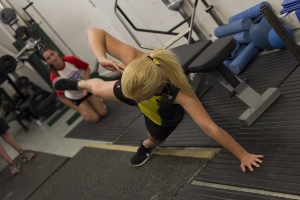Posts Tagged ‘physical education’
Teaching Games in Primary School
Last week, a Primary School teacher told me of their experience teaching tag rugby to year 3s (7-8-year-olds), ‘We practised passing down the line a lot but, when it came to the game, they didn’t know what to do.’ Compare that to the advice given by the Department of Education and Science: ‘At about nine…
Read MoreLessons learned from Lockdown PE
After filming 72 PE videos over the last year, here are some thoughts. To paraphrase Admiral Ackbar in ‘Return of the Jedi’: “It’s a wrap”! Our final PE video was filmed and edited last week: #72. We initially started by planning only nine when I first contacted Willand Primary School 50 weeks ago. None of…
Read MorePrimary School PE in Lockdown 3
The Prime Minister announced Lockdown 3 at just after 8 pm on Monday night. At 0551 on Tuesday morning I had an email from Miss Hawkins, the Head Teacher at Willand Primary School, asking me if I would produce some more PE videos. ‘Of course,’ I replied. So, here we are again. Another series of…
Read MoreThe Joy of Movement
Jumping for joy; when was the last time you did that? What about Jogging for joy? Hardly sounds the same does it? I recently heard two people talking about their exercise regime. Everything was counted. They count calories, they count steps, they count miles and they count lengths in a pool. Their measure of progress…
Read MoreWhy are you still using the plank?
Why are teachers and coaches still using the plank? I have no idea when this exercise was introduced but, much like the Grey Squirrel, it has eliminated its predecessors and become the dominant species. I was coaching my ‘Strength and Co-ordination’ group last night and I asked them if they did the plank at school…
Read MoreDoctrines of the Great Educators
Coaching is teaching. It is just applied in a different context. Whilst we can get caught up in the Xs and Os, or the latest buzzwords- “constraints led coaching!”, if we look back, we can learn from those that preceded us and find out what truly stands the test of time. In the book “Doctrines…
Read MoreThe Daily Mile: Teachers “Must Try Harder”
Why the Daily Mile should not be mandatory for pupils Two Primary School head teachers have mentioned the “Daily Mile” to me in the last 6 months. The first said he was going to introduce it in his school. The second asked me about it and had concerns because she didn’t want any of the…
Read MoreHistory of Educational Gymnastics in British schools
Educational Gymnastics in Britain A popular conception of gymnastics today is of young girls in sparkly leotards with hair kept up in tightly bound buns. This is a relatively new concept, with gymnastics originally being an all-male outdoor pursuit. Gymnastics has originated from several different sources, but all had the underlying principle of healthy movement.…
Read MoreWhy disengaged girls hate school sport
I have recently been asked to help coach “disengaged” girls in school p.e. I am doing weightlifting at one school, gymnastics at another. Funding is available to help these girls as they are unenthusiastic about “traditional p.e.” My experience coaching them is different from what I was told to expect. What is “traditional p.e.”? I…
Read MoreAthletic Development Workshop at Christ’s Hospital
Athletic Development in action at Christ’s Hospital Last week I ran 2 workshops for some of the Sports Scholars at Christ’s Hospital School in Horsham, West Sussex. Whilst the title was Athletic Development, the content was all about teaching the pupils about movement. Movement is the foundation of physical education (p.e.). So you could just…
Read More







